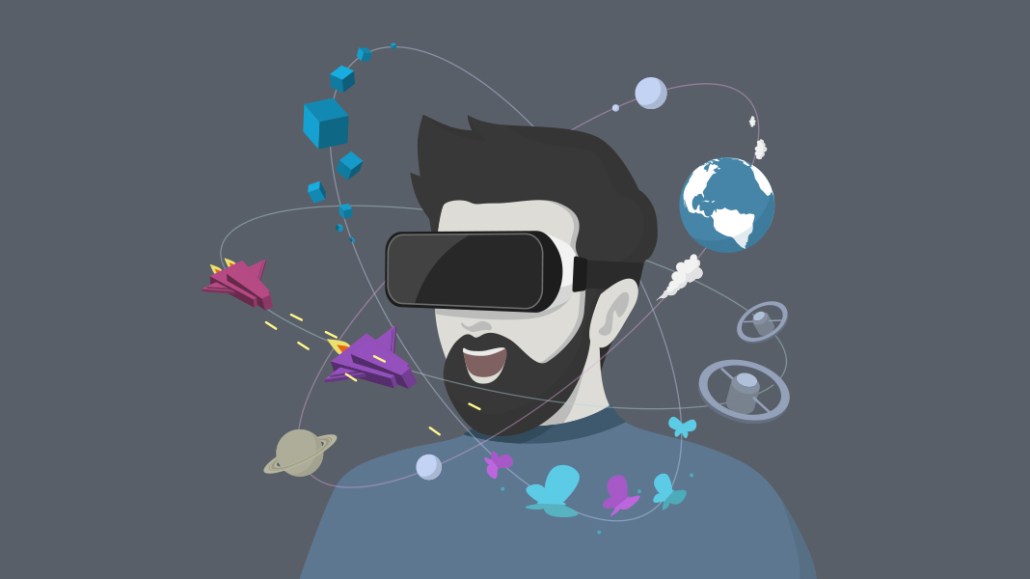
Lowe’s is testing augmented reality and virtual reality tools it says help customers visualize and “feel” a large home improvement product in the context of the customer’s living space.
“We look at age-old customer problems,” said Josh Shabtai, Lowe’s director of lab productions at Lowe’s Innovation Labs. “These are problems that keep resurfacing that folks haven’t solved yet. Our hypothesis is that as we move people closer to realizing their visions, they’ll feel more confident.”
Lowe’s Innovation Labs, with offices in Kirkland, Washington, Mooresville, North Carolina and Bangalore, India, were established four years ago to delve deeper into these questions, said Shabtai. Often working with startups, the company has since rolled out several pilot projects to test customers’ comfort with virtual and augmented reality, including Holoroom How-To, which immerses a customer in a DIY project – such as tiling a shower – and gives them step-by-step instruction to complete the task; employee training programs that involve virtual reality; Holoroom Test Drive, a feature that uses VR to offer customers a chance to sense the feeling they are actually holding and using a power tool; and “View in Your Space,” a mobile app feature which lets customers visualize how a piece of furniture may fit within the physical dimensions of their own living spaces. Of these pilots, two currently are still in market, including Holoroom Test Drive in Charlotte and the AR feature which went live for Android users in March.
While quick turnaround trials may suggest there are challenges getting customers to comfortably use the technology on a regular basis, Shabtai said the timing is part of Lowe’s approach to test new use cases, study the outcomes, and apply the lessons to future releases. Other retailers are also jumping on the VR/AR bandwagon, including Home Depot and Walmart.
“We’re trying to refine the experience and move on to an application that will be better and ready to scale,” Shabtai said.
Shabtai said early results are showing that VR-and AR-enabled tools offer two key use cases: helping customers better navigate how they’ll use tools or whether products are physically compatible with their homes; and helping employees learn more quickly to offer more personalized expertise, and ultimately, add more value to the in-store experience.
“When [customers] come into a Lowe’s store, they want to talk to an employee who is a real expert in the space,” said Shabtai. According to company proprietary data, employees who are trained on machinery using VR are 76 percent more likely to try out a piece of machinery compared to those who were trained using conventional methods; and customers have 42 percent greater recall with VR tools compared to YouTube how-to videos.
He conceded that the biggest challenge standing in the way of more mainstream adoption is cost, while AR can be more quickly deployed given the ubiquity of smartphones that are already equipped with enabling technology. Retailers’ advantage — particularly those whose core product offerings are big-ticket home appliances — is to tie the customer closer to the brand through these types of immersive efforts. Tactile experiences through virtual and augmented reality are ways legacy retailers can keep customers loyal, especially with competition from Amazon.
“Amazon wins on convenience and selection, so how can retailers combat that?” said Jim Cusson, president of retail marketing agency Theory House.”A lot of this has to do with the experience and brand engagement [derived from immersive tools like VR and AR].” Morningstar analyst Jaime Katz wrote in a recent report that Lowes’ business model is built off of customer service, knowledge, and innovation; using VR and AR could help augment its reach.
Despite larger retailers’ shift to AR and VR as differentiators, there’s a risk customers may preview items within the VR and AR interfaces and simply buy them on Amazon, so retailers like Lowe’s need to focus on those customers whose core goal is the pride they derive from carrying out hands-on home improvement projects. These customers aren’t necessarily motivated by price, said Atul Hirpara, CEO of AVA Retail.
“DIY shoppers enjoy visiting stores and build things that make them proud,” he said. “It’s not necessarily about money; what AR can do is augment their imaginations.”
For more retail coverage from Digiday, including exclusive analysis, research and interviews, subscribe to our weekly retail briefing email.
More in Marketing

The definitive Digiday guide to what’s in and out for advertising in 2026
Here’s the definitive guide to what’s in and out in 2026.

‘Less pitching, more listening’: What Amazon is really doing at CES
Amazon’s ad execs come to CES for their annual reality check.

After watching X’s ownership issues play out, marketers brace for TikTok whiplash in 2026
TikTok’s ownership drama has echoes of X (formerly Twitter), but ad performance has kept marketers for fleeing—for now.








